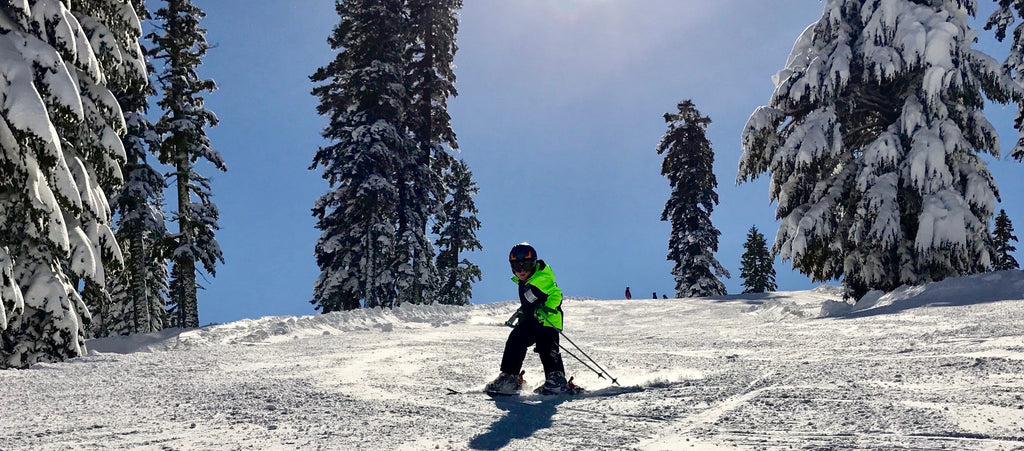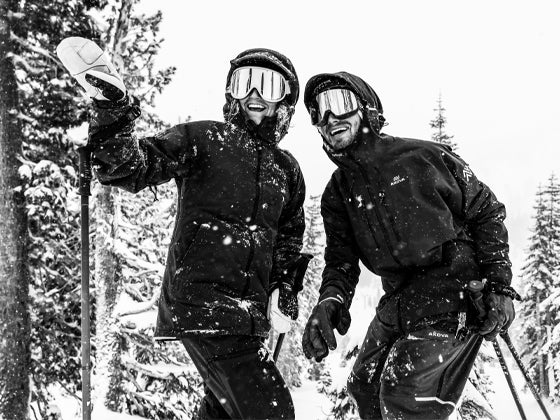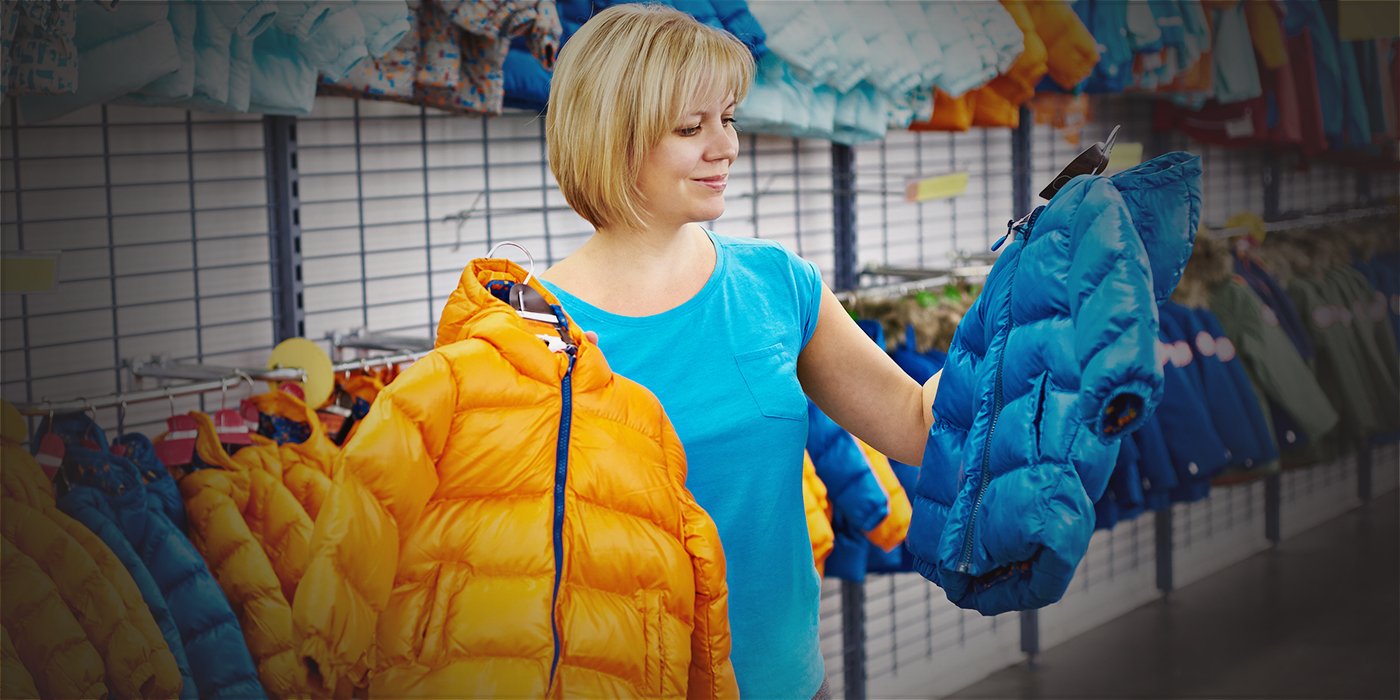The 2017 winter season is fast approaching and, with kids growing so fast, it’s time for new kids winter jackets and snow pants for many of us. To help you get the biggest bang for your buck this year, we put together this brief guide to the quality and price tradeoffs most relevant for winter jackets and snow pants. Hopefully you’ll find it helpful as you prepare for your family’s upcoming winter’s adventures.
Waterproof Breathable Membranes
If your kids are going to be spending extensive time in the snow or rain, their outerwear layer should include a waterproof breathable membrane. The waterproof portion of the membrane will prevent moisture from entering in through the outside of the garment, while the breathable portion will allow moisture vapor generated by body heat to exit the garment, preventing internal condensation buildup.
The amount of breathability required for your kids’ outerwear is determined by their level of exertion. If they are building snowmen in the front yard or learning how to stand up on skis for the first time, their exertion level will be relatively low. On the opposite end of the spectrum, if your kid has graduated to ripping through the trees on the side of a double black diamond, their exertion level will be relatively high.
The waterproof / breathability ratings are based on two industry standard tests.
The first number that is typically shown, and refers to the waterproofness of the fabric, is shown in millimeters (mm). To generate this rating they put a test tube over a 1" x 1" piece of fabric and continue to fill the test tube until the waterproofness of the fabric fails and starts to leak through. So a 10k or 10,000 mm rated fabric would be able to withstand 10,000 mm of water in the test tube before it failed. The higher this number is, the more waterproof the fabric is.
The second number that is usually shown is the breathability rating. This rating is usually expressed in g/m2/24hr. In simple terms: How many grams (g) of moisture vapor can migrate from the inside to the outside of a square meter (m2) of fabric during a 24 hour period. Once again, the bigger the number, the more breathable the fabric is.
Based on our research, the industry standard for kids snow gear is around 10k mm / 10k g/m2/24hr, with some premium brands getting up to 15k mm / 15k g/m2/24hr or 20k mm / 20k g/m2/24hr.
Seam Tape
For a product to keep your kids dry in snowy or wet conditions it must have some sort of seam taping. When a garment is sewn together, each stitch punctures the waterproof breathable membrane and creates a failure point for moisture to penetrate the garment. Seam tape seals these holes.
There are two main types of seam taping, fully seam taped and critically seam taped. On a fully seam taped product, every stitch line will be seam taped on the inside of the garment. On a critically seam taped product, the designers will only seam tape the "critical" stitch lines that have the most exposure to moisture, like those on the tops of the shoulders.
If your kid is only going to use the garment in the snow, during dry conditions, critically seam taping can be sufficient. If you would like the garment to be more versatile, keeping your kid dry during wet snow and rain, you may want to consider fully seam taped outerwear.

Layers
Layering is another subject that we will take a deeper dive into with its own dedicated blog post, but here are some quick tips on how to assemble the best layering system for your kids.
Starting with kids winter jackets, we recommend buying the insulation and outerwear as two separate layers, or as a 3-in-1 (insulation zips into the outerwear shell). We prefer either of these options over the industry standard insulated hardshell because they offer greater versatility for changing temperatures, allowing the kid to remove the insulation layer if they start to overheat. Plus, the insulation layer can be a great standalone jacket for cold but dry days.
Depending on the thickness of the upper body insulation layer, either a lightweight next-to-skin base layer or an additional mid-layer fleece will typically provide enough warmth when paired with insulation and outerwear layers.
The lower body does not usually require as much body temperature regulation as the upper body. So, a lightly insulated pant combined with a light next-to-skin base layer that can be removed is an effective lower body layering system.
Insulation
There are two main types of insulation, down and synthetic.
Down is typically warmer, lighter, and more packable than synthetic insulations. Down is ideal for sedentary activities like a sleigh ride. The downfall to down is the lack of breathability. During high exertion activities, like skiing or snowboarding, down will not breath, which causes condensation to build up on the interior of the garment, which will initially make your kid overheat and sweat, and then cause them to be cold once they stop being active. Untreated down will soak up moisture, fails to retain heat when wet, and will take a long time to dry.
Synthetic insulation is much more breathable than down, and a better choice for high exertion, cold weather activities like sledding or skiing. If synthetic insulation is exposed to moisture it will dry much faster than down, and it will continue to retain heat.
As we finalize the new SHRED DOG jacket and pant designs we will provide you more information on the different insulation options we are considering and get your feedback.
Articulation
Many outdoor gear brands provide articulation in their adult product offerings but forego the additional expense for their kids’ products. Articulation refers to fabric panels and stitching around the joints to allow for a greater range of movement and allows products to be more form fitted. Articulation can be found in the form of underarm and crotch gussets as well as knee and elbow stitching. Products with articulation will typically be slightly more expensive but will be much more comfortable for your kids. For younger kids (age 2-7), this level of performance may not be critical, but for older kids, a better fit and better range of motion may be important.
As we build out the SHRED DOG product line we will discuss the additional costs associated with articulation and find out whether or not you want us to include this feature in our products.
High Abrasion Area Reinforcement
It is no secret that kids are rough on gear. A majority of wear and tear can be avoided by selecting products that have the high abrasion areas such as the insides of the ankles, knees, and elbows reinforced.
The reinforcement can be as simple as a double layer of fabric, or a more durable fabric overlay. Either way it will extend the life of your kids gear and allow products to be passed down extending their usefulness.
I hope this provided you with some new information to aid you in making better buying decisions for your family this winter. If you have any questions, or would like more information on a particular subject in this blog post, please leave us a comment.
We hope you and your family have some exciting adventures lined up for this winter. Please tag @shred.dog.gear in your social media posts as we would love to follow along!








